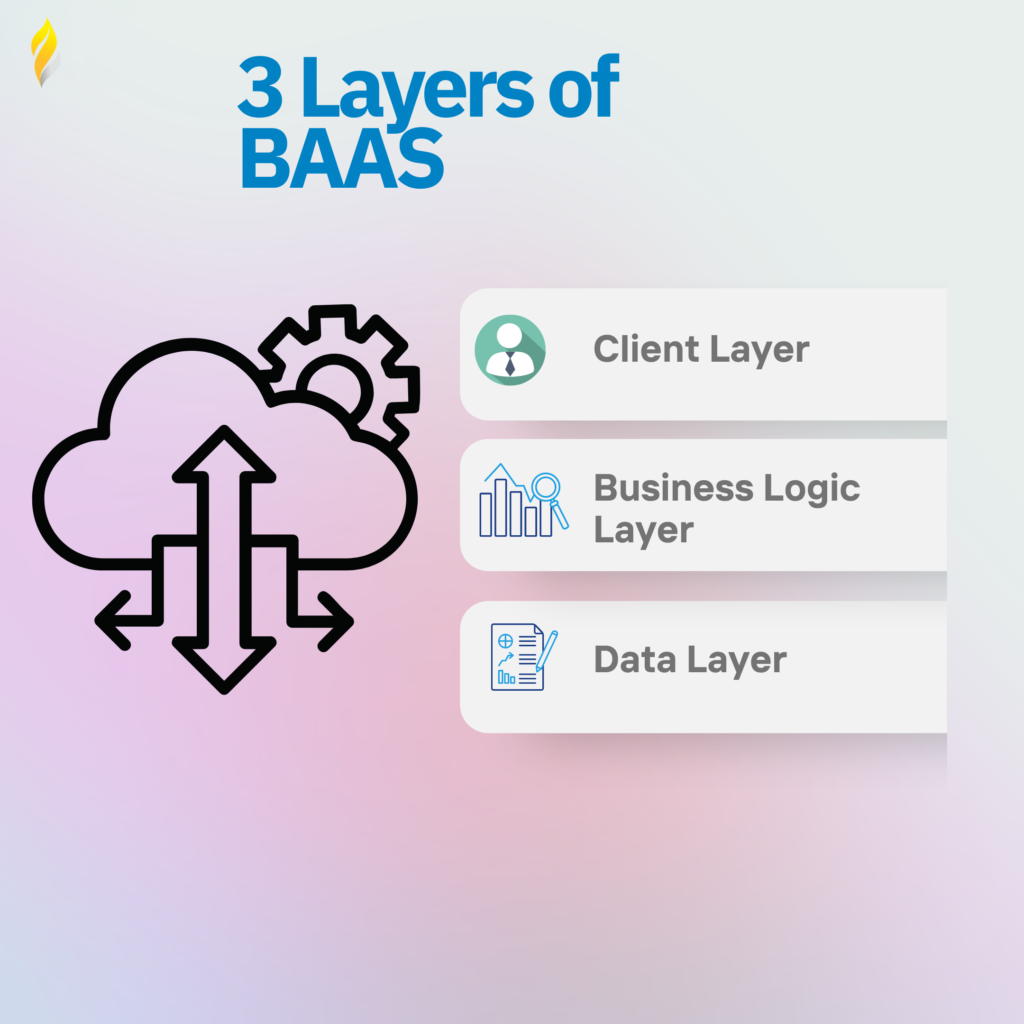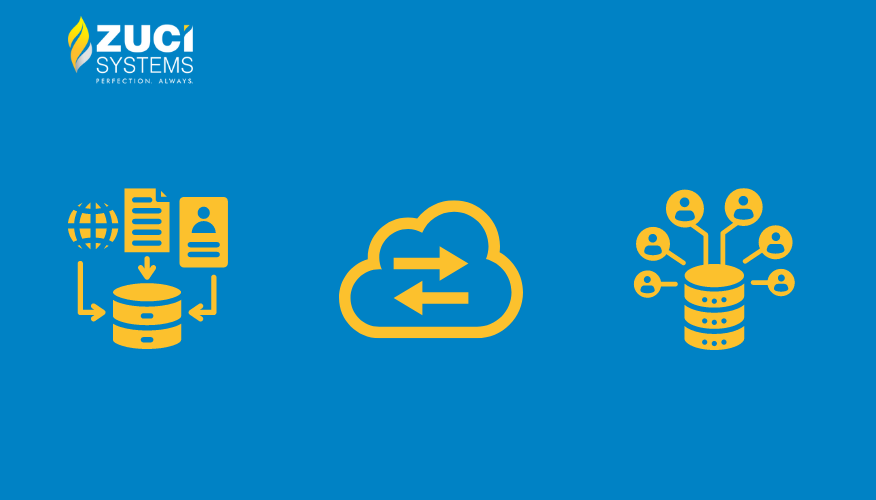Reading Time : 1 Mins
Should You Choose Cloud for Backend as a Service (BAAS)?
What Is BAAS?
Backend as a Service (BaaS) is a cloud service that allows developers to build an intuitive and scalable website or application by outsourcing all the behind-the-scenes aspects of development. In addition to cloud hosting and storage, BaaS providers offer pre-written software for server-based tasks including user authentication, remote updating, database administration, and push notifications. The cloud-based service model allows developers to access data storage and processing services without building and maintaining their servers.
How Does Backend As A Service Work?
BaaS providers offer numerous server-side capabilities. It includes database management, user authentication, cloud storage, remote updating, push notifications, and hosting. It enables developers to dedicate their time and effort to writing the front-end application code. They can incorporate all the backend functionality they want without constructing the backend themselves thanks to the BaaS vendor’s APIs and SDKs. To keep the program operating, they are also exempt from managing servers, virtual machines, or containers. As a result, they can create and launch web apps (including single-page applications) and mobile applications more quickly.
The BaaS architecture is composed of three layers: the client layer, the business logic layer, and the data layer. The client layer consists of the front-end application (such as an app or website), which interacts with end users. The business logic layer contains all business rules for managing data and processing requests from end users. The data layer contains databases that store information about your company’s customers, orders, and other assets.
When an end user sends a request from their app or website to your server, it will pass through one or more gateways that are part of your BaaS system before reaching its destination in one of your databases. Gateways are responsible for receiving requests, sending responses back to clients, and routing traffic between different databases when necessary.
Pros & Cons of opting cloud for BAAS

Pros of Backend as a Service
When you are a small business, working with a backend-as-a-service (BaaS) provider can be an incredible way to save money, time, and energy. Here are some of the biggest pros of using BaaS:
- Flexibility
If you’re looking to build a custom application, you can use Backend As A Service (BAAS) to make that happen. You can choose the language and framework that best fits your needs and scale the service up or down based on your requirements.
- Low cost
Using BAAS means there is no need to set up servers, configure data storage, or worry about any other technical issues when creating your application. A BAAS provider will take care of all of this for you at a low cost.
- Time-saving for developers
The biggest advantage of using BAAS is that it allows developers to focus on the functionality of their applications instead of worrying about infrastructure issues such as server maintenance and scaling problems. This means they can spend more time building features rather than wrestling with technical details, often seen as an obstacle when developing new applications but don’t contribute anything towards their functionality!
Cons of Backend As A Service
Before you get too excited, Here are some of the cons of BaaS that you need to know about before starting your next project.
- You are locked in: The biggest con of BaaS is that you are locked into a specific provider. If you want to switch providers, it will take time and money—and if you do not think ahead, there may be some things you will miss.
- Data privacy: Your data is stored on someone else’s servers, which means they have access to it too! That can be a real problem if your provider ever gets hacked or goes out of business unexpectedly (and trust us, these things happen). It would help if you made sure that any provider you choose has strong security policies in place so that no one else can get at your data without permission from you first.
How Does Backend As A Service Work?
BaaS providers offer numerous server-side capabilities. It includes database management, user authentication, cloud storage, remote updating, push notifications, and hosting. It enables developers to dedicate their time and effort to writing the front-end application code. They can incorporate all the backend functionality they want without constructing the backend themselves thanks to the BaaS vendor’s APIs and SDKs. To keep the program operating, they are also exempt from managing servers, virtual machines, or containers. As a result, they can create and launch web apps (including single-page applications) and mobile applications more quickly.
The BaaS architecture is composed of three layers: the client layer, the business logic layer, and the data layer. The client layer consists of the front-end application (such as an app or website), which interacts with end users. The business logic layer contains all business rules for managing data and processing requests from end users. The data layer contains databases that store information about your company’s customers, orders, and other assets.

When an end user sends a request from their app or website to your server, it will pass through one or more gateways that are part of your BaaS system before reaching its destination in one of your databases. Gateways are responsible for receiving requests, sending responses back to clients, and routing traffic between different databases when necessary.
Also read: Cloud Migration Strategies and Challenges
What to Consider When Choosing Backend As A Service?
When choosing a backend as a service (BaaS), there are various factors to consider.
- Essential Features: BaaS providers offer a list of essential features. The extent and purposes of these essential features differ between suppliers and cater to sophisticated business demands. When you are choosing BaaS, you need to consider features like social integration, native notification, search functionality, mobile application management, user authentication and authorization, data encryption, access control management, and visual development.
- Size and Project Complexity: Simple apps with strict deadlines call for a different strategy than complex apps with many features. When selecting BaaS, pick an adaptable stack that will help you scale up in the future.
- Add-ons or Integrations: It would be beneficial if you also looked into the BaaS provider’s add-ons and service integrations. Let’s say, for instance, that your app relies on email alerts. So that you don’t have to develop this feature yourself, it would be useful if your service integrates with Mailgun or SendGrid.
- BaaS Support: How well the BaaS supplier assists developers who have never utilized their platform is something else to take into account. When switching from another service, you’ll need to pay upfront before knowing whether it will meet your needs. While many providers provide free trial accounts for new customers, some don’t.
Why Choose Cloud for Backend As A Service?
The Cloud is a great way to get started with your web application. It is easy to use, and it can be scaled up as soon as you need it. But what else makes it so great? Here are some of the best reasons why you should choose Cloud for backend as a service:
- You can easily scale up when you need to. The Cloud is designed to scale up quickly, so you won’t have any downtime during peak hours or if someone mentions your website on Twitter. With the right provider, scaling up can be done in a matter of seconds!
- It is secure! Your data will be safe from hackers and other nefarious forces because it is stored in one place—the Cloud. Also, if something does happen, there are backup systems in place to ensure that no data will be lost or compromised (but hopefully, nothing will happen).
- You do not need any extra hardware or software set up on your end; the provider takes care of everything! This saves time and money on both ends because there are no additional costs involved with setting up servers or purchasing software licenses, for example
- It is Affordable. Cloud computing is often cheaper than hosting your server, which means you can save money while still getting the same level of service.
- It is easy to set up. You don’t need specialized knowledge or skills to use cloud services; sign up and get started!
- It is flexible. Cloud services give you more options for scaling up or down depending on your needs at any given time, so you can focus on what matters—your business.
Final Thoughts
The data center, as we all know, is changing fundamentally. With the rise of the Cloud and Backend as a Service, developers can bring unparalleled efficiencies in their work. Cloud and BaaS make it possible to simply plug into data center computing. It also frees up resources to concentrate on developing new apps and that it gives businesses the agility they need to innovate quickly and adapt to shifting market conditions. All these points toward a bright future for BaaS, big data, and field service, as businesses are already using robust cloud technology to make better decisions faster than ever.
Partner with tech wizards at Zuci to implement cloud services for your mobile and web applications.

Loves getting creative with mundane topics in addition to geeking out over books and movies.
Share This Blog, Choose Your Platform!
Related Posts












